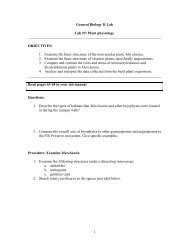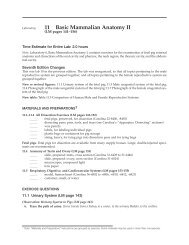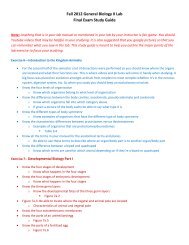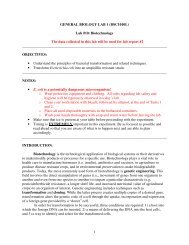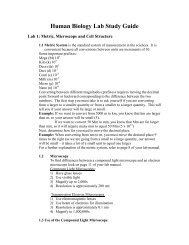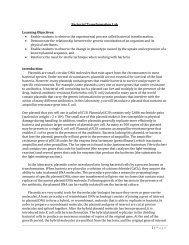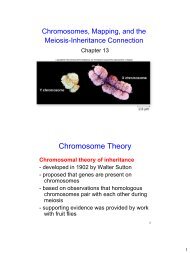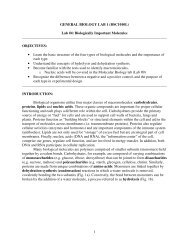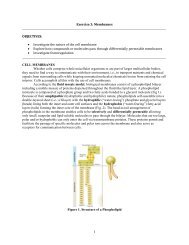Chapter 17. The origins of life and Precambrian evolution
Chapter 17. The origins of life and Precambrian evolution
Chapter 17. The origins of life and Precambrian evolution
You also want an ePaper? Increase the reach of your titles
YUMPU automatically turns print PDFs into web optimized ePapers that Google loves.
EVOLUTION/LECTURE1<br />
7.2.- Miller used methane, ammonia, <strong>and</strong> hydrogen as in the 1950s it was thought that<br />
the atmosphere <strong>of</strong> the young Earth was highly reducing. However, many atmospheric<br />
chemists now believe that Earth's early atmosphere was not so reducing, being dominated<br />
by Carbon Dioxide rather than methane, <strong>and</strong> molecular nitrogen rather than ammonia.<br />
7.3.- Reaching a consensus on the prebiotic environment is important, because an<br />
atmosphere dominated by carbon dioxide <strong>and</strong> molecular nitrogen appears to be<br />
much less conducive to the formation <strong>of</strong> certain organic molecules.<br />
7.4.- <strong>The</strong> view that the Earth possessed all the necessary ingredients for the origin<br />
<strong>of</strong> <strong>life</strong> is perhaps the most thoroughly investigated hypothesis <strong>and</strong> holds great<br />
appeal for many scientists even today. This opinion dates back to the efforts <strong>of</strong><br />
A. Oparin <strong>and</strong> J.B.S. Haldane, working in the first half <strong>of</strong> the 20th century. This<br />
scenario is <strong>of</strong>ten referred to as the Oparin-Haldane model<br />
8.- From simple inorganic to the building blocks <strong>of</strong> <strong>life</strong><br />
8.1.- Previously, we saw the ease with which amino acids can be made from simple<br />
inorganic like methane, ammonia, <strong>and</strong> hydrogen. What about nucleotides. A<br />
second monumental achievement in <strong>origins</strong>-<strong>of</strong>-<strong>life</strong> research was the demonstration<br />
by Juan Oró (1961) that the nitrogenous base adenine (a purine) could be readily<br />
made from a thermodynamically favorable reaction involving only ammonia<br />
file:///E|/CH17-PRECAMBRIAN-SPRING-2008/CHAPTER%2017_SPR_2008.HTML[12/8/2011 2:57:27 PM]



